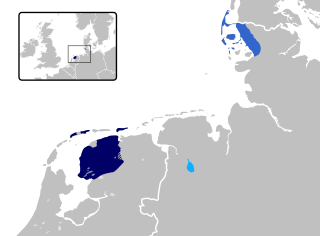
The Frisian languages are a closely related group of West Germanic languages, spoken by about 400,000 Frisian people, who live on the southern fringes of the North Sea in the Netherlands and Germany. The Frisian languages are the closest living language group to the Anglic languages; the two groups make up the Anglo-Frisian languages group and together with the Low German dialects these form the North Sea Germanic languages. However, modern English and Frisian are not mutually intelligible, nor are Frisian languages intelligible among themselves, owing to independent linguistic innovations and language contact with neighboring languages.
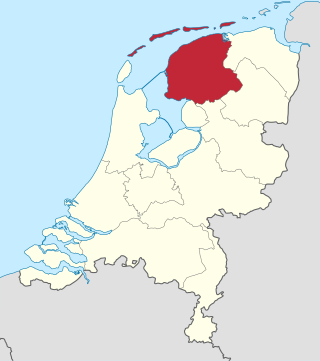
Friesland, historically and traditionally known as Frisia, named after the Frisians, is a province of the Netherlands located in the country's northern part. It is situated west of Groningen, northwest of Drenthe and Overijssel, north of Flevoland, northeast of North Holland, and south of the Wadden Sea. As of January 2023, the province had a population of about 660,000, and a total area of 5,753 km2 (2,221 sq mi).
The Frisians are an ethnic group indigenous to the coastal regions of the Netherlands, north-western Germany and southern Denmark, and during the Early Middle Ages in the north-western coastal zone of Flanders, Belgium. They inhabit an area known as Frisia and are concentrated in the Dutch provinces of Friesland and Groningen and, in Germany, East Frisia and North Frisia.
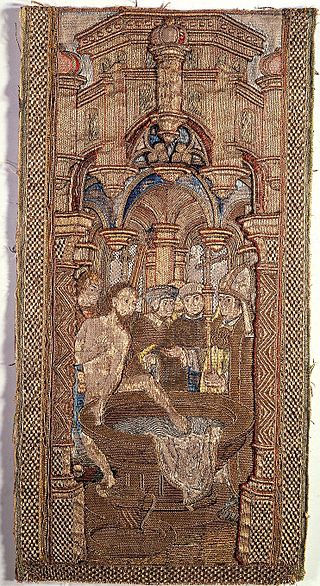
Radbod was the king of Frisia from c. 680 until his death. He is often considered the last independent ruler of Frisia before Frankish domination. He defeated Charles Martel at Cologne. Eventually, Charles prevailed and compelled the Frisians to submit. Radbod died in 719, but for some years his successors struggled against the Frankish power.

Sportclub Heerenveen is a Dutch professional football club from Heerenveen. They currently play in the Eredivisie, the top level of football in the Netherlands. The club is known for its Frisian identity.
Frisian literature is works written in the Frisian languages, including that of West Frisian spoken in the province of Friesland in the Netherlands, from which most texts were produced or have survived. The first texts written in Frisian emerge around the 13th century.
Albdag was a Frisian count from the 9th century.

The Frisian–Frankish wars were a series of conflicts between the Frankish Empire and the Frisian kingdom in the 7th and 8th centuries.

The Frisian Kingdom is a modern name for the post-Roman Frisian realm in Western Europe in the period when it was at its largest (650–734). This dominion was ruled by kings and emerged in the mid-7th century and probably ended with the Battle of the Boarn in 734 when the Frisians were defeated by the Frankish Empire. It lay mainly in what is now the Netherlands and – according to some 19th century authors – extended from the Zwin near Bruges in Belgium to the Weser in Germany. The center of power was the city of Utrecht.
The West Frisians or, more precisely, the Westlauwers Frisians, are those Frisian peoples in that part of Frisia administered by the Netherlands: the Province of Friesland, which is bounded in the west by the IJsselmeer and in the east by the River Lauwers.
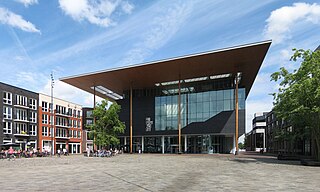
The Fries Museum is a museum in Leeuwarden, Netherlands. It has won the Global Fine Art Award which is sometimes nicknamed the Museum-Oscar.

De Alde Feanen National Park is a national park in the Netherlands province of Friesland. The Alde Feanen is also a Natura 2000 area.
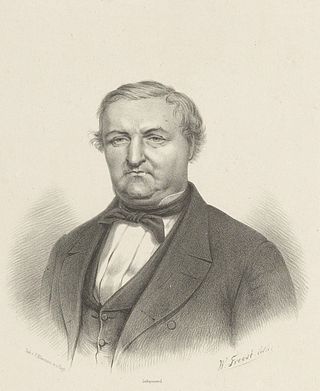
Eeltsje Hiddes Halbertsma was a Frisian writer, poet and physician, and the youngest of the Halbertsma Brothers. He became well known when he and his elder brother Justus published the poetry and short story collection De Lapekoer fan Gabe Skroar in 1822. Afterwards, this work was continually expanded, and also came to include contributions by a third brother, Tsjalling, until all the Halbertsma Brothers' prose and poetry was posthumously collected in 1871 to become the famous work Rimen en Teltsjes. This book played a role of crucial importance in the development of a new literary tradition after Western Frisian had been used almost exclusively as a spoken language for three centuries. Of the three Brothers Halbertsma, Eeltsje was probably the most talented, en his poetry especially is still very much admired. His oeuvre included the poem De Alde Friezen, which later became the national anthem of the Western Frisian people.

De Fryske Marren is a municipality of Friesland in the northern Netherlands. It was established 1 January 2014 and consists of the former municipalities of Gaasterlân-Sleat, Lemsterland, Skarsterlân and parts of Boarnsterhim, all four of which were dissolved on the same day. The municipality is located in the province of Friesland, in the north of the Netherlands, and has a population of 51,778 and a combined area of 559.93 km2 (216.19 sq mi).

Justus Hiddes Halbertsma was a Frisian writer, poet, minister, lexicographer and linguist. Today, he is primarily known for the poetry and short story collection De Lapekoer fan Gabe Skroar, which he wrote with his brother Eeltsje, publishing the first edition in 1822. Afterwards, this work was continually expanded, and also came to include contributions by a third brother, Tsjalling, until all the Halbertsma Brothers' prose and poetry was posthumously collected in 1871 to become the famous work Rimen en Teltsjes. Although the literary value of this collection was later disputed by some critics, it is undeniable that Rimen en Teltsjes played a role of crucial importance in the development of a new literary tradition after Western Frisian had been used almost exclusively as a spoken language for three centuries.

The Brothers Halbertsma were three brothers born in the Frisian village of Grou towards the end of the 18th century, who played a role of crucial importance for the development of a written literature in the Western Frisian language. These three brothers were:

Tsjalling Hiddes Halbertsma was a Dutch Frisian writer, poet and merchant, and the least well-known of the three Brothers Halbertsma. During his life he won a certain amount of fame in and around Grou, for the poems and short stories he wrote, and also because of his success as a businessman. After his death some of his literary works were collected with those of his brothers Justus and Eeltsje to be published in 1871 as the famous Rimen en Teltsjes. It was only from 1918 onwards that more of Tsjalling Halbertsma's works were added to this collection.
Rimen en Teltsjes is the national book of Western Frisian literature, written by the three Brothers Halbertsma. It is an extensive collection of short stories and poems, the first of which was published in 1822 under the title of De Lapekoer fan Gabe Skroar. Rimen en Teltsjes developed its present-day form in the course of the 19th century, when the Halbertsma's continuously added new work to their previous publications. Eventually their works were gathered together, and the first edition of the actual Rimen en Teltsjes was published posthumously in 1871. Although the literary value of this collection was later disputed by some critics, Rimen en Teltsjes and its predecessor De Lapekoer fan Gabe Skroar played a role of crucial importance in the development of a new literary tradition after Western Frisian had been used almost exclusively as a spoken language for three centuries.

Waadhoeke is a municipality of Friesland in the northern Netherlands. It was established 1 January 2018 and consists of the former municipalities of Franekeradeel, het Bildt, Menameradiel and parts of Littenseradiel, all four of which were dissolved on the same day.
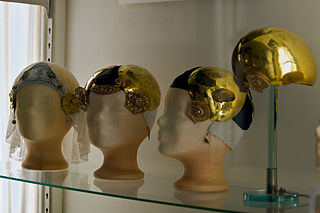
The Oorijzer is part of the Dutch folk costume for women, especially in the northern provinces of the Netherlands and in the province of Zeeland. It was originally part of the everyday attire of the Dutch before its adoption in the regional costumes.













